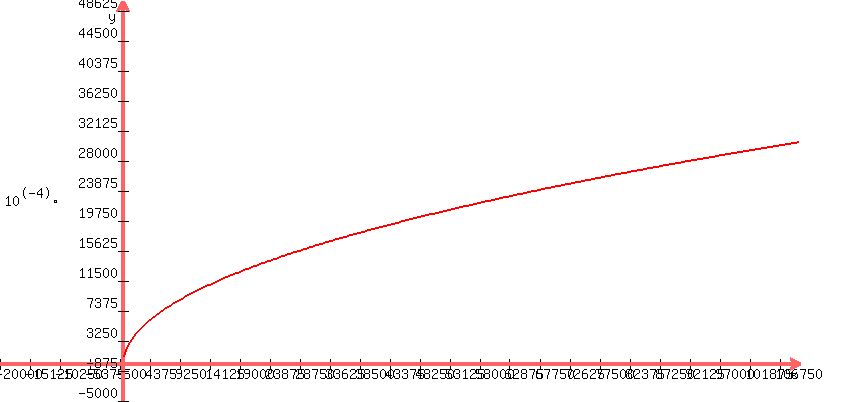|
Question 730619: HELP!!! PLEASE!!! Been working on this for soo long and don't know what to do.
The ability of steel rod material to carry a load is related to the cross-sectional area of the rod. you can rewrite the expression that relates to the
cross-sectional area of the steel rod to the desired tension
(π (d^2))/4= (L)/(15,000 psi )
where d is the diameter of the steel rod in inches
and L is the load desired to be supported under tension, in pounds (L is divided by the safe working stress for medium steel rod, 15,000psi)
a. using the equation above, isolate the variable d to find an equation for the diameter of ateel rod needed for any load L.
b. draw a graph of your equation for loads from 0 to 100,000 pounds.
c. Is this graph linear or nonlinear?
THANK MUCH FOR THE HELP!!
Answer by hoomanc(14)   (Show Source): (Show Source):
You can put this solution on YOUR website! This equation is very common in engineering designs. it expresses that the stress in a steel bar is amount of load in the unit area section. so,
 >>> we measure the maximum pressure each material can bear to yield and collapse by experiment in labs. in your case you defined that you want the stress to be adjusted be 15000 psi that means as much as the load increase you must increase the area (by increasing diameter) to limit the stress (review the above equation again) for round section the area i: >>> we measure the maximum pressure each material can bear to yield and collapse by experiment in labs. in your case you defined that you want the stress to be adjusted be 15000 psi that means as much as the load increase you must increase the area (by increasing diameter) to limit the stress (review the above equation again) for round section the area i:
by radius >>> pi*radius^2 or
by diameter >>> 0.25*pi*dia.^2
so,
 >>> >>>  >>> >>>

 >>> >>>
a) for first part: 
b) for second one:

the "Y" values refer to diameter in inches. Note that they should multiply by 10^-4 (example 1000 means 0.1 inch and 20000 means 2 inches)
c) as you can see this graph is definitely non-linear cause the slope change by load for lower loads it is more steep and as you gradually the load increases, the amount of diameter changes more slightly.
If you are familiar by the concept of derivation, the first derivation of this function is not a constant number that means the slope is not constant:
 >>> >>>

as you can see the derivation of d (change of diameter due to load change) is still a function of load.
in other word, if you increase load from 10000 to 20000 ponds, the diameter should increases about 0.38 inch to preserve the stress to 15000 psi,
but if you increase load from 20000 to 30000 ponds, the diameter should increases about 0.29 inch to preserve the stress to 15000 psi.
In both situation, we increase the load 10000 ponds, but the required increment of diameter is going to reduce as we test in higher loads.
Load (Pound) >>> D (inch)
10000 >>> 0.92
20000 >>> 1.30
30000 >>> 1.60
40000 >>> 1.84
50000 >>> 2.06
60000 >>> 2.26
70000 >>> 2.44
80000 >>> 2.61
90000 >>> 2.76
100000 >>> 2.91
110000 >>> 3.06
120000 >>> 3.19
130000 >>> 3.32
140000 >>> 3.45
150000 >>> 3.57
160000 >>> 3.69
hope that make sense
|
|
|
| |